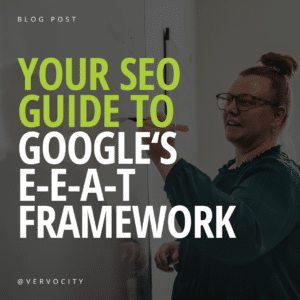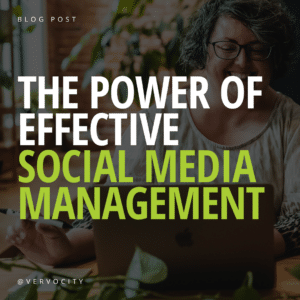Gone are the days of simply taking photos of your lunch and posting them to the gram. Social media has evolved, and your business should be evolving with it. Because of the massive audience potential, social media platforms are powerful tools for businesses.
Social media for business is no longer optional. It’s an essential way to reach your customers, gain valuable insights, and grow your brand. Each social media platform has its own unique guidelines, but there are a few tips that work universally for any social media strategy. Follow these do’s and don’ts of social media posts to get a head start on your social media management for 2023.
POST SCHEDULING
DO: Create a schedule
Preparation is key. Creating a schedule lets you plan content ahead of time so you aren’t scrambling for last-minute content ideas. A schedule also allows you to see your posts in one calendar to ensure variety and avoid repetition. Try not to continuously create posts with the same message or product push. Customers will get bored, and you’ll start to lose overall interest. Mix up post types to provide customers with valuable or relatable content. For example, common post types include:
- Answers to Frequently Asked Questions
- Motivational Posts
- Tutorials (Reels, Stories, or Posts)
- Product Promotion (Focus on benefits over features)
- Blog Topics
- Announcements/Business News
- Behind the Scenes
- Fun or Funny Components about your Business
- How-To’s
- Informational Lists
- Tips & Tricks
- Client Testimonials
- Employee Highlights
- Sales/Discounts
Feel free to get creative with your posts when you schedule them. Many different post types could work for your business, so choose the best ones for your specific audience. It’s also okay to make last-minute or spontaneous posts if something new and exciting arises, but try to schedule what you can in advance to save yourself time and stress in the future.
Don’t be afraid to research social media calendars to find one that best fits your needs. Common scheduling platforms include Later, Hootsuite, and Hubspot.
DON’T: Prioritize frequency over consistency
Although we recommend posting to social media at least 4-5 times per week, consistency in quality matters much more than frequency. Provide your audience with valuable content rather than frequent content. You may meet your personal requirements for the amount of posts per week, but if engagement is low, you aren’t really offering what your customers want to see.
Consistency also ensures goals are being met by staying true to your strategy. You shouldn’t post 10 times in one week and then take the next week off because you’ve pushed out enough content for two weeks. If you know you’ll be gone or won’t have time for new content, prepare in advance by scheduling posts in a social media calendar. Consistency over frequency ensures audiences receive quality content on a reliable basis.
CONTENT SHARES
DO: Reshare customer/relevant content
Coming up with new content ideas can be difficult. Don’t shy away from resharing customer content about your brand, services, or products. However, don’t take credit for the content your customers create. Tag their profile or reshare their exact post whenever you wish to reshare content. Give credit to the original creator.
A popular example of a customer reshare strategy includes creating a campaign-specific or product-specific hashtag. Asking customers to post your brand, product, or service with the relevant hashtag you’ve created will *hopefully* generate usable content for your feed. Watch for notifications of your brand being tagged or the hashtag being used, and share that content to your feed or stories.
DON’T: Reshare personal opinions/irrelevant content
Repeat after us: Your business page should be separate from your personal page. Create an entirely new profile for anything business related. Customers don’t want to see content that isn’t relevant to your brand. They’re following your business for a reason.
Separate accounts also allow you to separate your personal life from your business life. Not every business owner wants to share personal details about their life or family with their customers. Personal opinions on certain topics should also be kept to personal pages. That doesn’t mean businesses can’t share their stance on important matters and how they’re addressing or contributing to movements, but personal rants and thoughts should be kept on personal platforms.
POST ELEMENTS
DO: Include an engaging headline
Headlines are the first thing your audience sees in a social media post after the photo (if you’ve used one). You have about five seconds to catch your audience’s attention on a post before they move on. This means an engaging, attractive headline needs to be written within the first 60 characters of content. Your post should entice readers to read or learn more. Keep headlines simple and to the point. Use keywords if necessary, but don’t get overly technical. Headlines should encourage some type of emotion within your audience so they feel the need to keep reading.
DON’T: Forget a call-to-action
A call-to-action (CTA) should be included in most, if not all, social media posts. CTAs tell your audience what they should do next. Do you want them to answer a question, leave a comment, like/share a post, or visit a website? A call-to-action acts as a closer for your content, so don’t leave your audience hanging. Use CTAs to promote engagement, and be specific in what you want to encourage your audience to do.
PHOTOS/VIDEOS
DO: Include photos and videos
It’s a fact, social media posts that include a photo or video perform better than posts without either one. Humans are visual creatures, and we respond better to visual cues. There’s a reason Instagram requires a photo or video for every post: visuals are memorable and promote better engagement. They also seem to get more likes and shares than only text posts. Photos and videos help show your brand rather than just tell, especially when our brains are wired to perceive and interpret images quicker than text. Videos in the form of reels and stories are becoming increasingly important, especially for Instagram and Facebook algorithms. Choose high-quality images of high-quality content to promote your brand.
Not sure where to start? Research competitors and businesses within your industry for ideas. Talk to your customers about what they want to know or would like to learn more about. Research is powerful when used to learn more about your customers’ wants and needs.
DON’T: Only use stock photos
We get it, stock photos are easy and convenient to find. However, stock photos shouldn’t be the only source of visual media for your social media posts. Amazing, creative content deserves a photo just as worthy, and sometimes impersonal stock photos just don’t cut it. This doesn’t mean you can’t use them at all, but it’s better to use personal brand photos if possible. Photos that show the daily workings of your business help instill trust in your brand. Customers like to see the people and processes they do business with. Take advantage of photos by showcasing who you are and what you can do.
We understand that budget can be a factor in getting professional photos taken of your business and operations. If professional photography isn’t an option, try using different settings on your mobile phone to create professional-esque imagery. Mobile device cameras have come a long way over the years, and it’s possible to take quality images on most devices. Infrequent photo shoots are also an option for a low budget. Hire a photographer for the day and use those images throughout the year or until you run out of them. At Vervocity, we will shoot and edit photos for you so all you have to do is schedule them within your social media strategy.
CONTENT FOR THE CONSUMER
DO: Pay attention to customer engagement
Data is an important aspect of social media. Pay attention to your posts that receive customer engagement. What type of content does your audience respond to the most? Take a look at your analytics each week and make note of the best performing posts. Use that information to create similar content in the future, and continue to build upon or optimize your content every time you do.
Customer engagement metrics, like comments and shares, can also provide valuable feedback about your products or services. Watch for customer testimonials, interest, or feedback within the comments. Look to see if your customers are tagging their friends or recommending your product to others. Shares let you know that something about your post interested your audience enough that they wanted to share it with others. Engagement improves audience reach, and creating content for your customers will help your posts show up for more and more people.
DON’T: Create posts based only on what you want to say
It can be tempting to post the best features of your best products, but are these posts also showing your customers how those products can benefit them? Think about your customers in every post you make, and how that post can improve their life or add value to their day. Your social media platforms should showcase your brand for your customers, not just to them.
It’s also important to note that not every social media platform is the best choice for every business. Choose the platforms that your target audience uses, and tailor your content to fit those platforms. Don’t put together a post and then schedule it for every platform because you’re trying to tell everyone everywhere what you have to say. Research what your audience is using, and create content to fit that platform. Not every platform is the same, and image sizes, text context, and posting times vary between each one.
Feeling overwhelmed by all the “do this, but don’t do that” social media tips? That’s okay. A good social media strategy takes practice and time. Be creative and take chances with your posts. If you find yourself struggling with content ideas or lacking customer engagement, don’t hesitate to contact us. Vervocity has helped businesses, large and small, develop social media strategies focused on their goals. Whether you only need initial set up and direction or full on social media management, our team has you covered.











